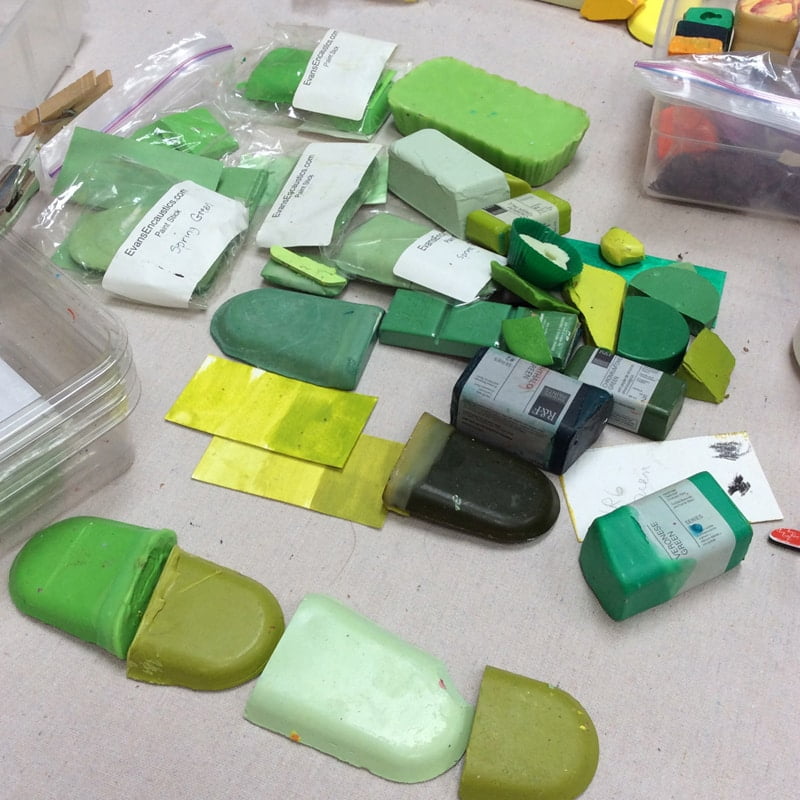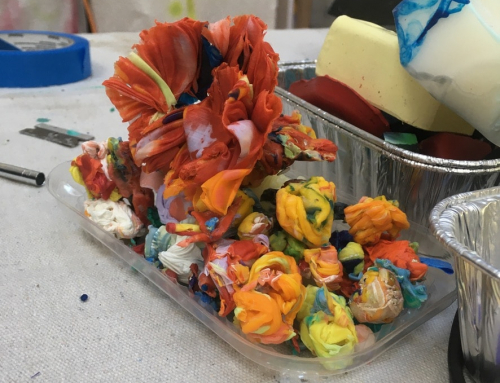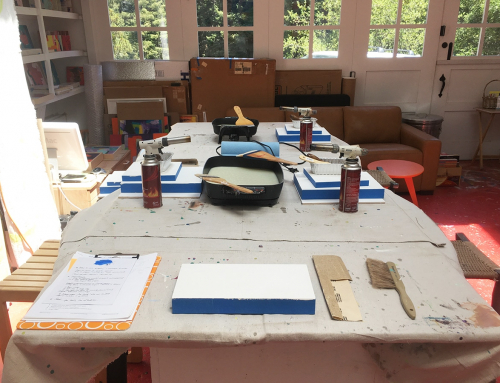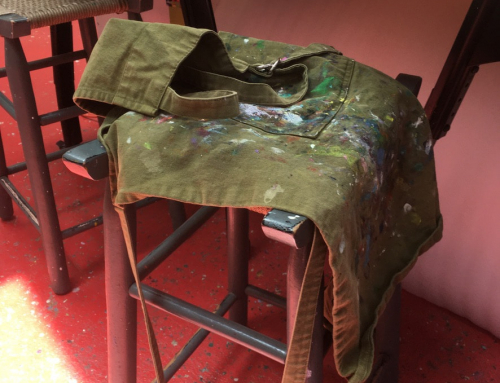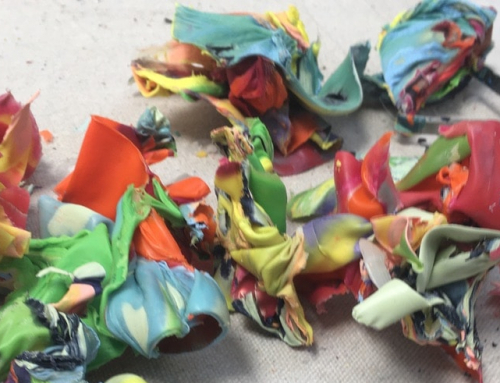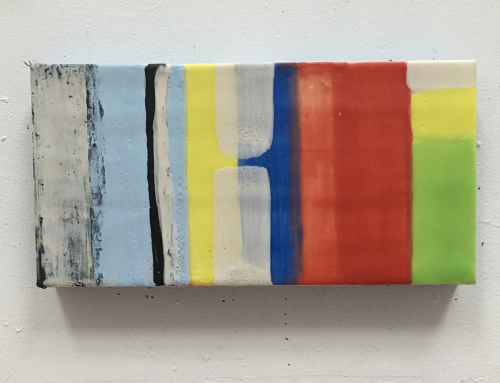A Short History of Encaustic
Encaustic painting is an age old technique used by the Greeks dating back to the 5th century B.C. First used to weatherproof ships, it was later used as decorative ship paint with the addition of pigment. As the Greeks settled in Egypt, encaustic was used to paint the funeral portraits. The most famous encaustic works are the Fayum funeral portraits painted in the 1st Century A.D. by Greek painters in Egypt.
Care of An Encaustic Painting
Treat an encaustic painting like any fine art. Work can be stored by wrapping it in wax paper and then bubble wrap with the bubbles facing outward in order to not leave an impression. Store at room temperature and out of direct sunlight. The paintings can be “buffed” up to a shine by wiping with a soft cloth or the palm of your hand.
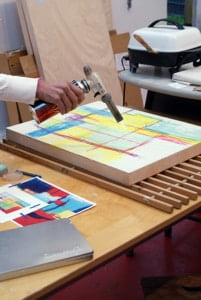 Encaustic paintings won’t melt in a warm environment. They actually prefer it! The greatest risk to an encaustic painting is the car. (think animal, baby…) The sun intensifies the heat and could soften the wax. When I travel with my paintings I make sure to park in a shady spot with the windows lowered for better circulation. It takes at least 160 degrees to bring wax to a molten state and I paint within a 180-200 degree range.
Encaustic paintings won’t melt in a warm environment. They actually prefer it! The greatest risk to an encaustic painting is the car. (think animal, baby…) The sun intensifies the heat and could soften the wax. When I travel with my paintings I make sure to park in a shady spot with the windows lowered for better circulation. It takes at least 160 degrees to bring wax to a molten state and I paint within a 180-200 degree range.
